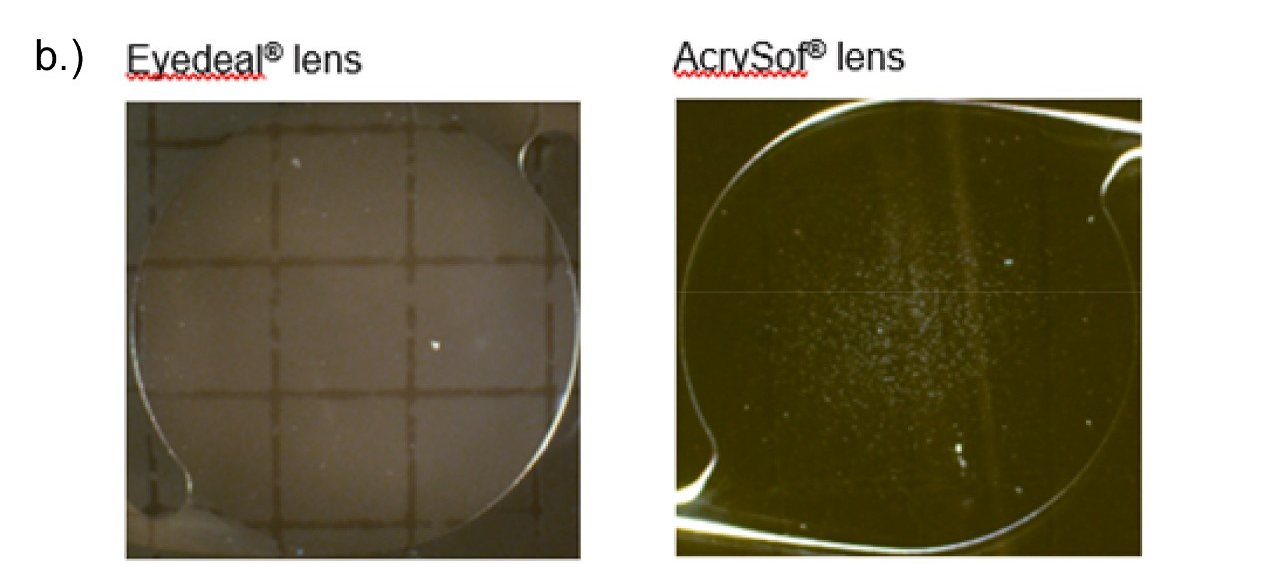Evaluation and Outstanding Performance of Eyedeal’s New Cross-linked Polyisobutylene Intraocular Lens
The year 2024 marks the 75th anniversary of the first intraocular lens (IOL) implantation surgery. On November 29, 1949, Harold Ridley successfully implanted the first IOL, ushering in a new era in ophthalmology. Since then, IOL materials have evolved continuously—from the original polymethyl methacrylate (PMMA) to silicone, hydrogels, and acrylics—through successive generations of innovation.
Despite significant advancements in existing materials, the scientific pursuit of superior IOL materials has never ceased. Cross-linked polyisobutylene (xPIB), a novel biomedical material, has been applied for the first time in IOLs by Xi’an Eyedeal Medical Technology Co., Ltd.. The material has been evaluated by Professor Gerd U. Auffarth and his team at Heidelberg University in Germany. Their research, titled “In-vitro assessment of a novel intraocular lens made of crosslinked polyisobutylene” was published in April 2024 in the Journal of the Mechanical Behavior of Biomedical Materials.

The study employed accelerated aging, contact angle measurement, scanning electron microscopy (SEM), and optical testing to characterize the unique properties and optical quality of the xPIB IOL material. Evaluation indicators for this novel IOL material showed that the Eyedeal® xPIB IOL demonstrated exceptional performance in glistening resistance, visual quality, and manufacturing precision, making it an outstanding innovation in the field of ophthalmology.

Microscopic Images of Glistening Formation: Eyedeal® xPIB IOL vs. Control Lens at 14x Magnification
In glistening formation studies using accelerated aging, the Eyedeal® xPIB IOL outperformed the control lenses. Microscopic images at 14x magnification clearly showed significantly fewer glistenings in the Eyedeal® xPIB IOL.

Contact angle is a key indicator of a material’s surface hydrophobicity. A higher contact angle means it is more difficult for bacteria to adhere to the IOL surface. The measured contact angle of the Eyedeal® xPIB IOL was 97.2°. In contrast, AcrySof materials have reported contact angles ranging from 73.3° ± 2.4° (Dick et al., 2001) to 84.4° ± 0.1° (Jung et al., 2017).

SEM images revealed that the optical center of the Eyedeal® xPIB IOL was smooth and well-defined under all test conditions, indicating high-quality surface finishing and excellent manufacturing standards.

Refractive power of the Eyedeal® xPIB IOL. L = Lens, D = Diopters, SD = Standard Deviation

MTF measurements under 3 mm and 4.5 mm apertures demonstrated that the Eyedeal xPIB IOL meets ISO standards for nominal refractive power. It exhibited outstanding MTF performance under both photopic and mesopic pupil conditions, providing patients with sharp and stable visual outcomes.
In summary, the Cross-linked Polyisobutylene (xPIB) intraocular lens developed by Eyedeal exhibits excellent performance. It is glistening-free and significantly more hydrophobic than acrylic materials, effectively reducing bacterial adhesion. The lens meets ISO standards in terms of nominal power and surface quality, and delivers exceptional visual outcomes under both bright and low-light conditions.